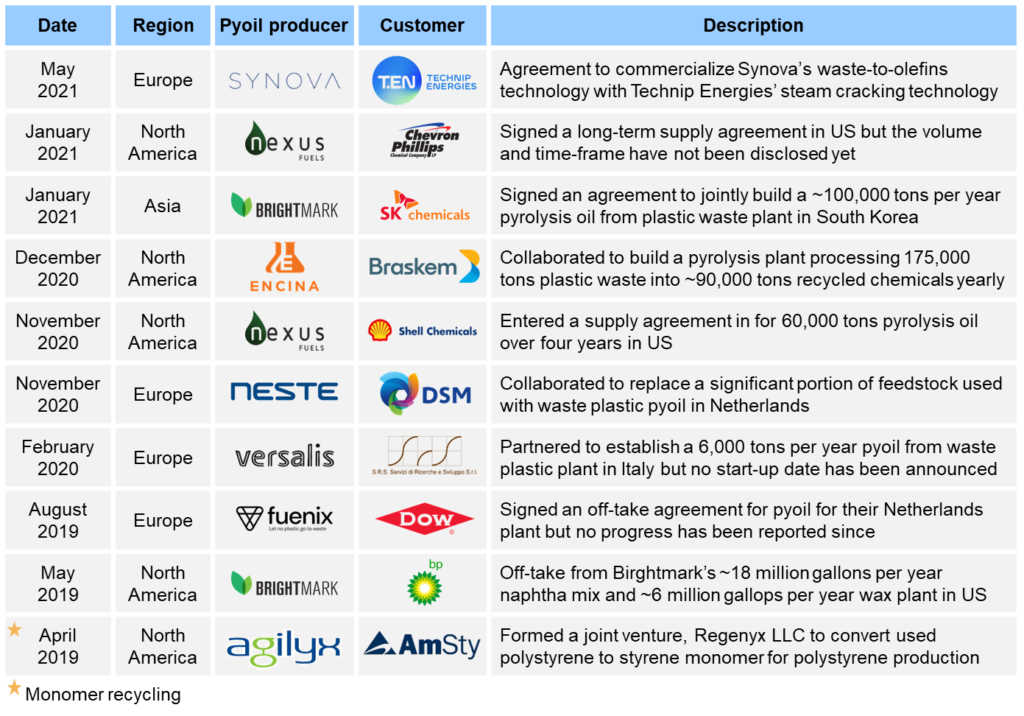Research and development on chemical recycling with emphasis on pyrolysis is rapidly advancing towards commercialization. Chemical recycling is dominated by pyrolysis or monomer recycling. Pyrolysis is heating plastic waste at high temperature in the absence of oxygen and converting it into a liquid known as pyrolysis oil. Pyrolysis oil can be used in various applications such as for industrial or transportation fuel or as feedstock for refining and chemical industries.
Monomer recycling, on the other hand, is referred to as chemolysis or solvolysis. It uses different combinations of chemistry, solvents, and heat to break down polymers into monomers. The monomers are then treated to remove potential contaminants and used to make polymers.
Despite advancements in technology, less than 2% of plastic used globally is chemically recycled at commercial levels. Post-consumer plastic waste collecting, sorting, and cleaning are very important steps in chemical recycling and many companies struggle to source high-quality waste to recycle. This has created a significant supply/demand gap for pyrolysis oil that can be used by petrochemical majors to fulfill their sustainability goals. Feedstock recycling is observed to be growing faster than monomer recycling today and many petrochemical majors are scrambling to establish tie-ups with pyrolysis oil producers to ensure high-quality supply of pyrolysis oil. Some partnerships and investments announced on chemical recycling are summarized in Exhibit 1.

Exhibit 1. Partnerships in the chemical industry towards chemical recycling
We expect chemical recycling to grow in the near future and ADI Chemical Market Resources has been actively tracking new technologies and partnerships announcements towards chemical recycling and has assisted various stakeholders assess and navigate recycled plastic markets. Contact us to learn more about our research work and consulting on waste plastic recycling.
By Panuswee Dwivedi and Uday Turaga
